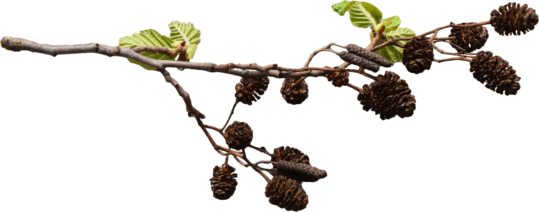|
Having trouble viewing this email? View it as a Web page.
May 2, 2022
May Weed of the Month: European Alder
Julia Dellick, Minnesota Department of Agriculture
European alder (Alnus glutinosa) is a deciduous tree native to Europe, southwest Asia, and northern Africa. It is a Restricted Noxious Weed in Minnesota, meaning that it can’t be sold and planted legally. These trees are considered a pioneer species which means they can establish and grow in harsh, barren landscapes that lack nutrients. For these reasons, European alders have been grown in North America for site restoration and erosion control. They have also been planted as landscape and boulevard trees as their height and shape make them desirable shade trees.
 European alder laves have a glossy dark green upper surface and paler green underside.
Click here to download the photo
Infestations in the Twin Cities, as well as neighboring states and Canadian provinces, demonstrate that this tree has invasive potential in natural areas. These trees have the tendency to displace native plant species as they can form dense stands which outcompete native species for water, nutrients, and sunlight. In addition, European alders can further disrupt native ecosystems by altering soil chemistry and water flow.

The leaves of the European alder are rounded with a wedged base and a toothed margin. Interestingly, this tree has both female and male flowers. The male flowers are slender 1-to-1.5-inch catkins which are present through winter months. Female flowers are small, clustered near branch tips and develop into ¾ inch long woody cones. Female cones persist through winter, shedding many winged nutlets.
|
 A European alder branch with both male and female catkins.
Click here to download the photo
European alder seed production varies from year to year and can be affected by drought conditions; however, it usually has heavy seed crops. The European alder can start producing seeds as young as 2 years old, so removing the young saplings is a great way to reduce the spread of this plant. Once these trees produce seeds it can be difficult to limit their spread.
For more information about European alder, visit the MDA website.
MEDIA: For more information on Weed of the Month, contact Allen Sommerfeld, MDA Communications, at allen.sommerfeld@state.mn.us or 651-201-6185
|